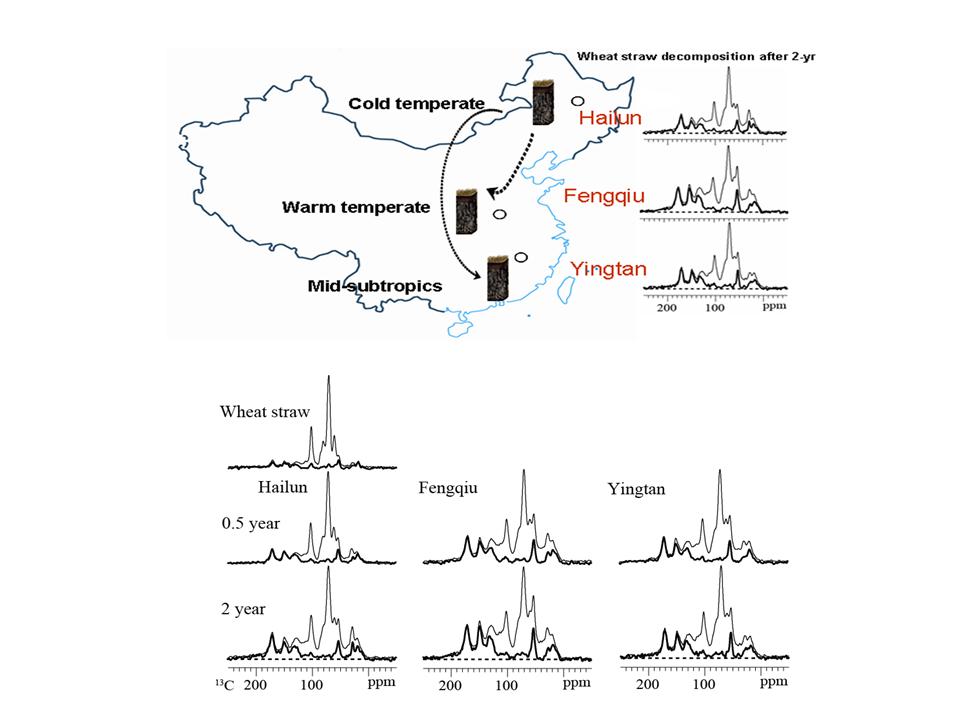Straw decomposition converts the products of photosynthesis into stable soil organic matter, which plays an important role in carbon sequestration and soil fertility enhancement in farmland ecosystems. It has been proposed that plant materials decompose via similar pathways and produce the same end-products during a lengthy decomposition process which may take several years or even decades to complete. However, there is currently no evidence supporting the structural similarity of remaining residues during decomposition under different climates. The researcher group led by Prof. SUN Bo in Institute of Soil Science, Chinese Academy of Sciences, confirmed this hypothesis by studying the straw decomposition process based on a soil transplantation experiment. The results are published in Environ. Sci. & Technol., 2012, 46: 7159-7165.
The North-South Transect of Eastern China is a longitude transect driven by heat and water gradient, which covers temperate, subtropical and tropical regions. Along this transect, three main types of soil (i.e. black soil, chao soil and red soil) were selected and transplanted to the three agricultural regions, which were Hailun in Heilongjiang, Fengqiu in Henan and Yingtan in Jiangxi. Solid 13C-NMR was used to study straw decomposition at time scale of 0.5-2 years. The aims of the study were: investigate the changes of straw chemical composition during the decomposition in different soils under different climate conditions; analyze quantitatively the relative impacts and interactions of precipitation, temperature, soil and straw variables on the continuous change of compositions of residual straw, which could provide a theoretical basis for developing site-specific management practices of straw returning under different climate and soil conditions.
During the two year decomposition, climate condition, straw type and soil type had significant impact on straw decomposition. After 2-year, mass remaining and C/N of residue straws under different treatments became similar. The analysis of NMR was applied to investigate the impact factor on structural composition of residual straws in black soil under different climate conditions. Climate conditions and straw quality had marked effects on the residual material structure in the first half year of decomposition, but then decreased. Wheat and maize straw showed common decomposition characteristics with a decrease of O/N-alkyl carbons and di-O-alkyls, and a simultaneous increase of alkyl carbons, aromatic carbons, aromatic C-O groups and COO/N-C=O groups. Overall, the results indicated that the chemical compositions of the two types of straw became similar after 2 years of decomposition under different climate conditions.
| |
 |
| CP/TOSS spectra (thin lines) and CP/TOSS/DD spectra (thick lines) of original and decomposed wheat straw. |
